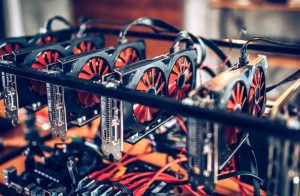Tight margins are in the mining business
3 min readBitcoins don’t grow on trees. Getting them requires effort in the form of work. The miners take over this task. They make computing power available to the network, thereby securing the blockchain and receiving a reward in the form of Bitcoin. The miners “create” the blocks in which the transactions are recorded. In doing so, they are in competition with others who are also hoping to find the next block. Those who have more computing power increase their chance of getting the next block. A miner currently receives 6.25 Bitcoin for this. However, this “Block Reward” is offset by a cost side. Because the miners have a high power consumption. In order to operate profitably and be competitive at all, a number of conditions must be met. Every cent decides on profit and loss.
Which factors play a role in mining?
A few parameters decide when mining is worthwhile. First: the Bitcoin course. The miners are paid in BTC. The price is therefore the decisive factor in earnings. In a way, it determines the salary per block. At the time of writing, the bitcoin price is around 28,000 USD. For a found block you get about 175,000 US dollars, not including transaction fees.
The most important factor in spending is the price of electricity. Of course, this fluctuates in a global comparison. That is why locations with low energy prices are particularly attractive for miners. In Germany, a household currently pays around 42 cents per kilowatt hour (electricity prices for industrial customers are cheaper).
And finally: the hash rate. To create a block, miners need to find a specific random number. These numbers are called hashes. That can only be done by trying. Modern mining equipment is optimized to do just that. You create as many hashes as possible in a short time to find the right one. The latest devices create over 100 terahashes per second. A terahash is a 1 followed by 12 zeros. All miners involved in the search form the hashrate of the network. The higher it is, the more secure the network. A miner’s share of the total hashrate also determines the probability of finding a new block.
All factors influence each other. For example, if the Bitcoin price increases, the business becomes more attractive and other miners could decide to participate in the network. This reduces the probability for the individual actors to find a block. Accordingly, costs would have to be curbed. And the best way to do that is via the electricity price.
Stitched on edge
In order to better illustrate the financial tightrope walk of the miners, it is worth designing an example scenario. The Antminer S19 Pro is one of the most popular mining devices. It creates a whopping 110 terahashes per second. Bitcoin price is around 28,000 USD as of today, April 6th. The total hash rate of the Bitcoin network is currently 377,430 exahashes/s.
Another parameter is also required: the difficulty. This indicates how difficult it is to find the hash you are looking for. Bitcoin code dictates that a new block will be found approximately every 10 minutes. In order to maintain this cycle, the difficulty is adjusted at regular intervals, depending on how many miners are involved in the search. We refer to a current value of 46,843 TH (Target Hash). More about the Bitcoin difficulty here.
When is it worth it?
These values can be used to determine the electricity price from which a miner is profitable and whether the Antminer is profitable.
The calculations show that profits can still be made with an electricity price of 10 cents per kilowatt hour. However, if the price increases by just one cent, you are already in the red. So anyone who has decided to set up such a device at home will be disappointed. At current prices for the end user, this would result in an annual loss of more than 10,000 euros.
With an electricity price of 42 cents per kilowatt hour, the Bitcoin price would have to rise to over 122,000 US dollars for home mining to be worthwhile. Provided, of course, that the hash rate does not change, which can be ruled out with a BTC price above the 100,000 mark.
Cheap electricity is therefore essential for bitcoin mining in order to remain competitive. However, an exact cost calculation remains a real undertaking for companies. Because the Bitcoin course, electricity prices and hash rate are difficult to predict. In addition, there is a regular shortage of block rewards during so-called halving. More about this here.






